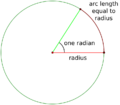Tau facts for kids
 |
|||
Quick facts for kids Greek alphabet |
|||
|---|---|---|---|
| Αα | Alpha | Νν | Nu |
| Ββ | Beta | Ξξ | Xi |
| Γγ | Gamma | Οο | Omicron |
| Δδ | Delta | Ππ | Pi |
| Εε | Epsilon | Ρρ | Rho |
| Ζζ | Zeta | Σσ | Sigma |
| Ηη | Eta | Ττ | Tau |
| Θθ | Theta | Υυ | Upsilon |
| Ιι | Iota | Φφ | Phi |
| Κκ | Kappa | Χχ | Chi |
| Λλ | Lambda | Ψψ | Psi |
| Μμ | Mu | Ωω | Omega |
| Other letters | |||
| Ϝϝ | Digamma | Ϟϟ | Koppa |
| Ϛϛ | Stigma | Ϡϡ | Sampi |
| Ͱͱ | Heta | Ϸϸ | Sho |
| Ϻϻ | San | ||
Tau (written as Τ for big letters and τ for small letters) is a letter from the Greek alphabet. It makes a "t" sound, just like the "t" in "table." People in Ancient Greece used it, and people speaking Modern Greek still use it today. In the old system of Greek numerals, Tau stood for the number 300. Other letters we use, like the Roman letter T and the Cyrillic letter Т, actually came from Tau!
Contents
Why is Tau Useful in Math?
Some people think Tau could be a really helpful number in mathematics, especially when we talk about circles. They want to use Tau instead of another famous number called Pi.
What is Tau's Value?
If we used Tau, it would be equal to two times Pi. This means Tau is about 6.283. Think of Pi as being around 3.14, so Tau is just double that!
Making Math Easier to Understand
People who like using Tau believe it would make some math ideas simpler to learn. One big reason is that it could make understanding radians much easier.
Understanding Radians
A radian is a special way to measure the size of an angle in a circle. Imagine you have a circle. If you take the distance around the outside of the circle (called the 'arc length') that an angle covers, and you divide it by the radius (which is the distance from the center of the circle to its edge), you get the angle in radians.
If the arc length is exactly the same as the radius, then you have an angle of one radian. If you go all the way around a whole circle, there are about 6.283 radians. This means there are exactly Tau radians in a full circle!
How Tau Simplifies Angles
This is where Tau becomes super handy!
- A quarter of a circle would simply be Tau divided by 4 radians.
- Half a circle would be Tau divided by 2 radians.
This way of thinking about angles feels more natural because it directly relates to parts of a whole circle. Even though not many people use Tau yet, more and more mathematicians are starting to see its benefits!
Related pages
Images for kids
See also
 In Spanish: Τ para niños
In Spanish: Τ para niños



